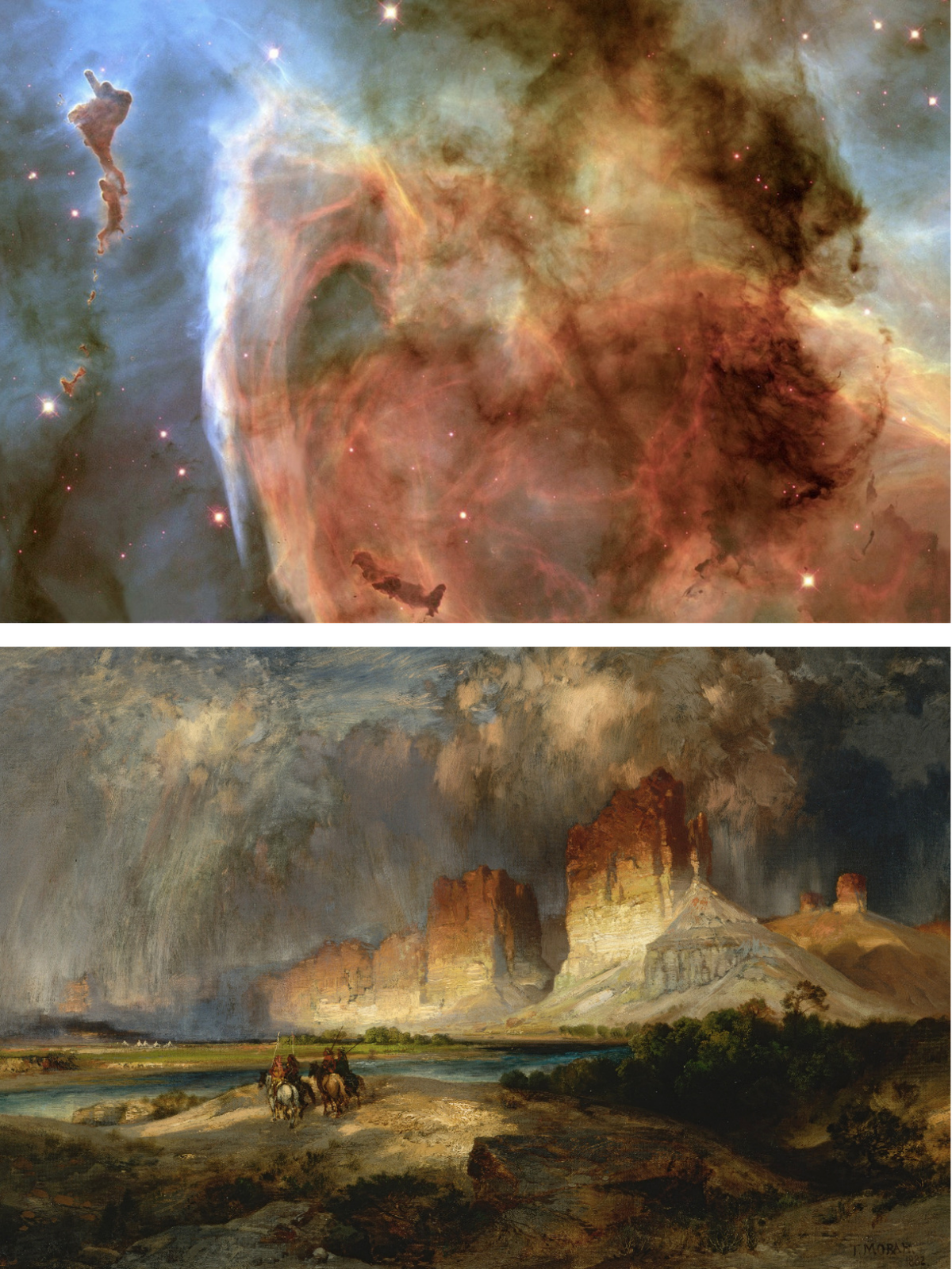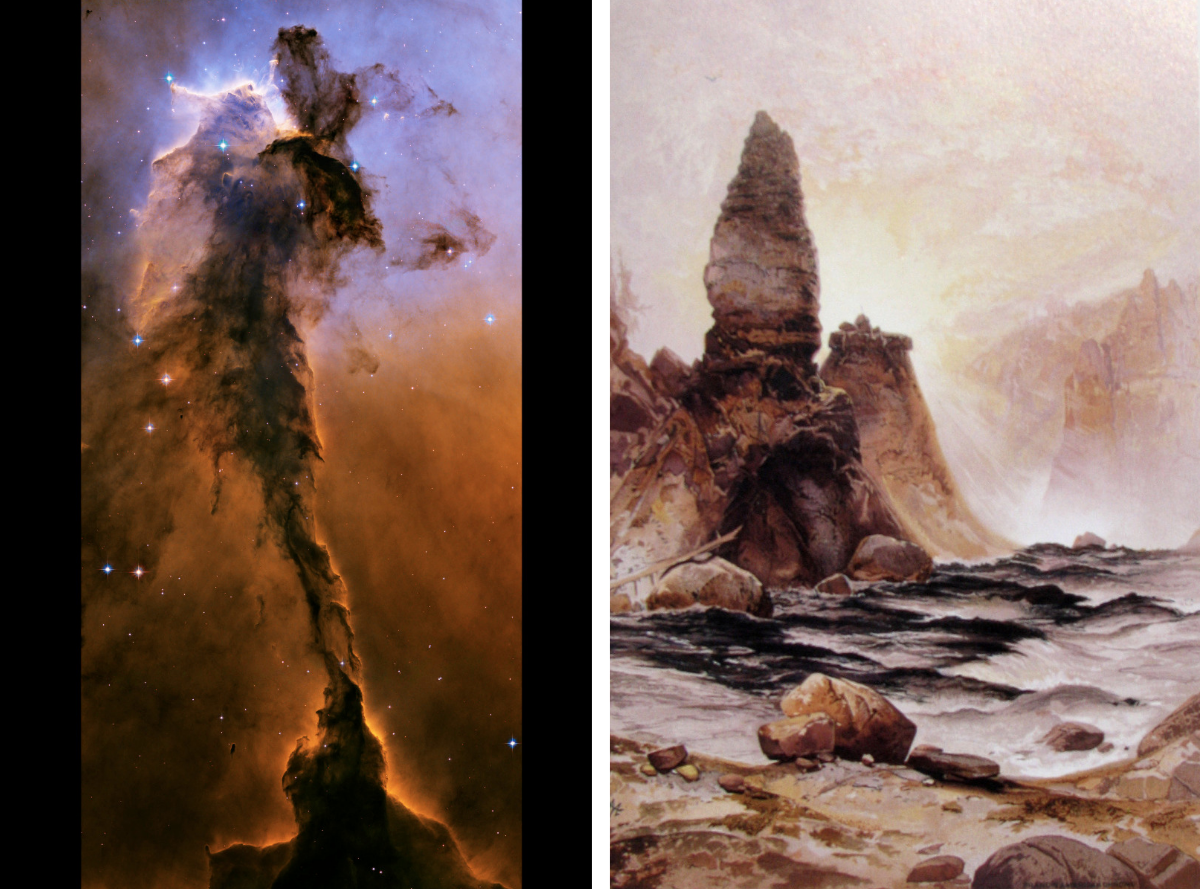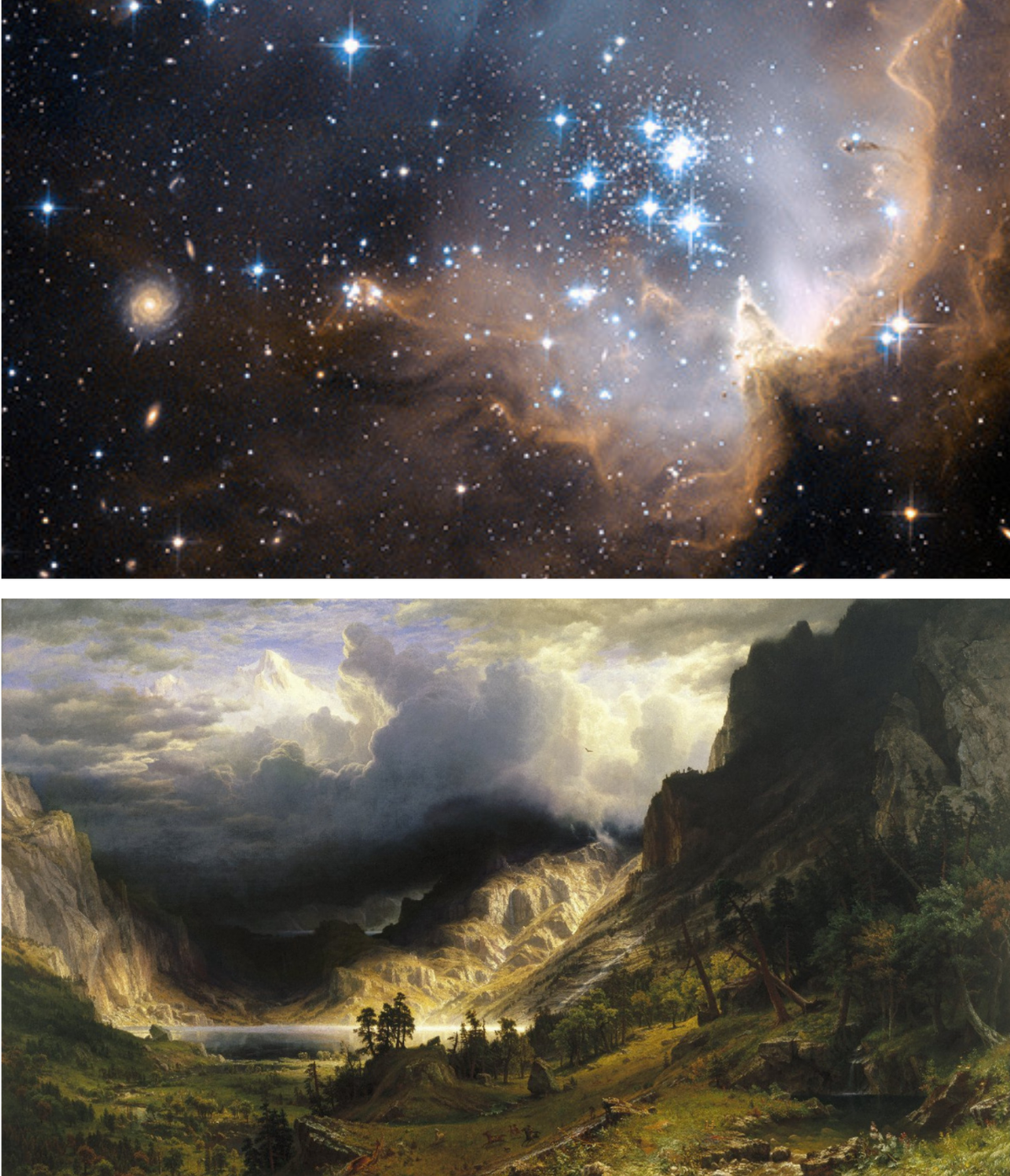
What Hubble Space Photos and Western Landscape Paintings Have in Common
Both traffic in the sublime, and have helped us grok new frontiers.
If there were ever a good time to ponder the cosmos and our place in it, this is it—a moment when the preciousness of being alive is evident in the everyday. Exploring the wonders that lie beyond the Earth and the Milky Way offers an even broader context for that appreciation.
Since the Hubble Space Telescope became a pivotal eye in the sky, three decades ago, it has provided astronomical photos of breathtaking beauty—like “Cosmic Reef,” recently released for Hubble’s 30th anniversary—that raise our awareness of life within a vast, dynamic universe.
It has also helped us intuit the immensity of the cosmos, which can be overwhelming: Just how do you grasp 14 billion years (the approximate age of the universe), or gaseous plumes that span some 30 trillion miles? Thanks to the Hubble, we’re now able to visualize the far reaches of space and vividly imagine things like the birth and death of stars. Such pictures have become tangible guideposts in our discovery of the unknown—aesthetic gems, rooted in science, that spark our imagination and sense of wonder.

But it’s not the first time that dazzling pictures have helped us imagine and envision new frontiers. In the 19th century, magnificent scenes of the American West emerged in landscape paintings by several artists who traveled to the western territories, some as part of geological survey expeditions. Their aesthetic interpretations of earthly formations like pillars, cliffs, and canyons were a powerful conduit for the public at a time when few people could actually visit places like Yellowstone and the Colorado River.
Elizabeth Kessler, a Stanford University lecturer and author of the book Picturing the Cosmos: Hubble Space Telescope Images and the Astronomical Sublime, says the dramatic scenes of towering rock formations and roiling clouds created by painters like Thomas Moran and Albert Bierstadt inspired viewers to contemplate the power of natural forces and the landscape’s epic scale. In much the same way, she says, the Hubble photos—some bearing poetic titles like the “Pillars of Creation”—transcend their scientific underpinnings.
“[Hubble’s] views of ethereal nebulae and glittering galaxies and star fields—they’re not just compelling visualizations of scientific data,” Kessler said during a recent online lecture for the American Institute of Physics. “Like the 19th-century paintings, they evoke a powerful aesthetic response. They encourage us to see the universe as sublime.”

The Hubble Heritage Project, formed in 1998 by a small group of astronomers and image processors at the Space Telescope Science Institute, regularly invoked landscape tropes when releasing new images and descriptions of celestial phenomena. For the “Pillars of Creation,” for instance—an astonishing image showing those massive plumes of gas in a region of the Eagle Nebula—the star-formation process was compared to the forces that shape the buttes of the American Southwest, notes Kessler.
The aim of the project, like those 19th-century Western landscape painters, was to create aesthetically rich images of exploratory observations. Today, astronomers and astrophotographers work closely together on the cosmic images that have revolutionized the way we perceive the universe.
“I would work with the images in a way that any photographer would,” says Zoltan Levay, a retired astrophotographer who played a key role in creating Hubble’s images for 25 years at the Space Telescope Science Institute, a research facility for NASA. “We tried to stay as close as possible to the data … The more subjective areas are how you render the image and adjust brightness, contrast, and color.”

The raw material arrives as black-and-white photos, says Levay, because Hubble’s cameras don’t produce color images. Following astronomical conventions, colors are assigned to reflect wavelengths of light emitted by stars and gases that have been excited into higher energy states: hotter is bluer, cooler is redder. They can then be adjusted for visual impact.
Other cosmetic interventions include cropping and orientation, cleaning up light specks (caused by cosmic rays bombarding the orbiting telescope), and making selective choices about contrast (such as removing harsh glare or superblack spots) to ensure that certain features or details are visible to human eyes.
The results are sweeping panoramas of heavenly phenomena that fire the senses and imagination. The importance of their public appeal can’t be underestimated: In 1995 the “Pillars of Creation” helped rehabilitate Hubble’s reputation after a flaw in the telescope’s mirror was discovered and required a repair mission. “Here was visual proof that this was an incredibly valuable scientific instrument,” says Kessler.

Levay finds resonance in the comparison of Hubble’s pictures with the historic landscapes of the American West. An astronomer by training with a passion for photography since high school, he reflects, “The images are a hook. Our hope always was that people would look at the images and be curious enough about them to delve more deeply into the stories about what they represent.”
In Bierstadt’s 19th-century landscapes, Kessler notes, the painter created composite images from his travels to highlight the power and grandeur of the majestic geography he beheld. Such images—of the American West then, and the vast cosmos today—not only inspire curiosity; they also allow us to viscerally grasp experiences we might not otherwise be able to process.
“When confronted with the sublime,” Kessler says, “there’s an opportunity for transcendence. The sublime pushes us outside and beyond our everyday experience—it pushes us to another level.”
























Follow us on Twitter to get the latest on the world's hidden wonders.
Like us on Facebook to get the latest on the world's hidden wonders.
Follow us on Twitter Like us on Facebook